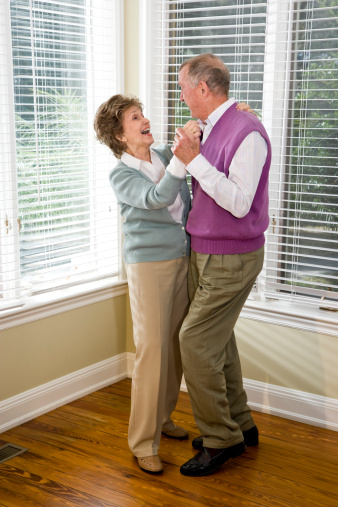

 For those with joint pain, arthritis or mobility problems, exercise is usually the last thing on their minds. Joint pain can make even the smallest movements quite painful, and swollen joints or other mobility problems can definitely severely limit the range of movement one can make.
For those with joint pain, arthritis or mobility problems, exercise is usually the last thing on their minds. Joint pain can make even the smallest movements quite painful, and swollen joints or other mobility problems can definitely severely limit the range of movement one can make.
However, although it may seem ironic, new studies have shown that exercise is proving to be one of the most effective methods of combating joint pain, stiffness and other forms of mobility issues. A unique variety of exercise programs are beginning to be offered to seniors experiencing joint pain and mobility problems around the country, and they are showing some absolutely incredible and extremely promising results.
The Hospital for Special Surgery (HSS) in New York City is now offering an exercise program for senior citizens in their Flushing, Queens, and Chinatown senior centers, with the goal of helping them decrease their joint pain, increase their mobility, and improve their overall health.
A presentation titled “Impact of an Asian Community Bone Health Initiative: A Community-Based Exercise Program in New York City” was given at the American Public Health Association Annual Meeting held in Boston, MA, earlier this month. The presentation looked at the expanding population of Asian senior citizens in New York City, which saw a 64 percent increase between 2000 and 2010. Twenty-five percent of these seniors lived in poverty, with an increased risk of osteoporosis and osteoarthritis. They tend to lack health coverage, and their linguistic and cultural barriers often prevent them from accessing health care.
The HSS offered exercise programs for these senior citizens, including 6 sessions of AFEP and 3 sessions of Yoga exercise lessons, each lasting 8 weeks. The programs helped the senior citizens learn how to manage their joint pain through exercise, and taught them how exercise could help improve their life overall.
Upon completion of the program, more tests were run. The results were quite fascinating:
These results showed that exercise was quite effective for helping to manage joint pains, and the exercise program offered by the HSS will continue to be made available to senior citizens in New York City.
In West London, the English National Ballet offers ballet lessons to sufferers of Parkinson’s disease, and the classes are helping the patients see marked improvement. Patients participating in the ballet program have exhibited better balance, coordination, and flexibility while reporting less tightness in their muscles. They are also seen to be smiling more and getting up out of their wheelchairs mroe often.
Both the emotional and physical effects of the exercise program are being monitored by researchers at the University of Roehampton, with the study being lead by Dr. Sara Houston. The ballet program has proven to be very effective at improving the lives of those with Parkinson’s disease. Doctors are noticing both psychological and emotional improvements among their patients – a sure sign that exercise is the key to a better life.
Copyright © www.orthopaedics.win Bone Health All Rights Reserved